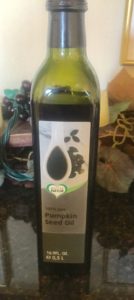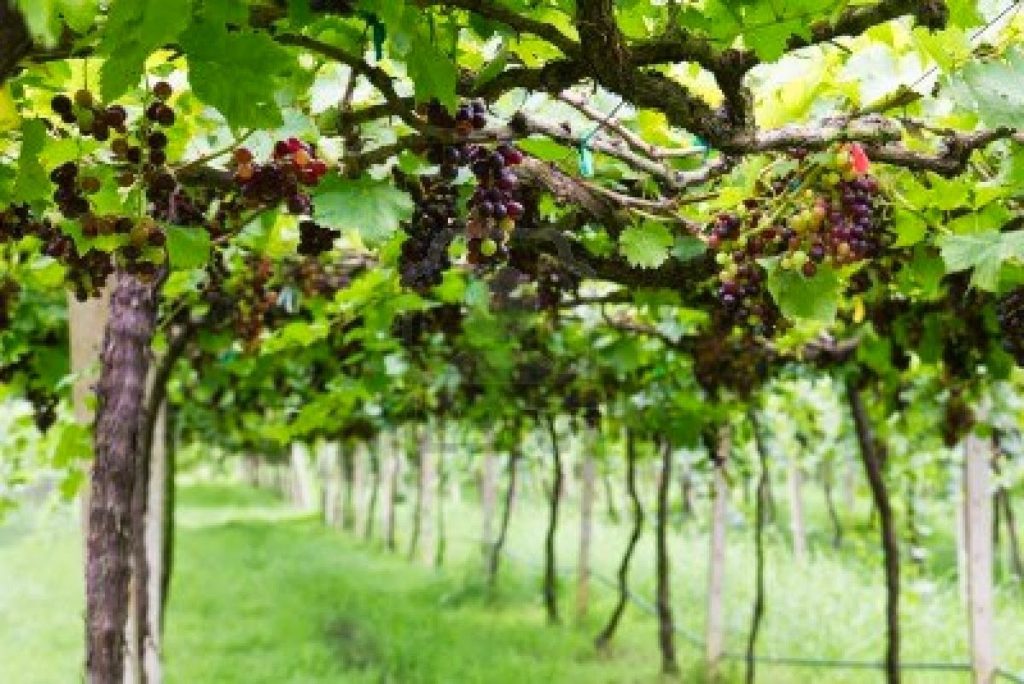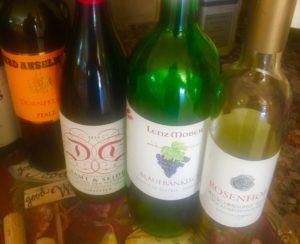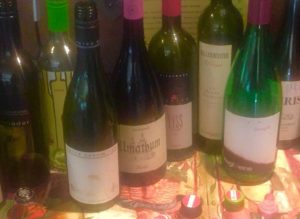Whenever I used to think of Austria, visions of snow-capped Alps Mountains and Julie Andrews dancing and singing across the countryside with the Von Trapp Family came to mind. That movie was released in 1965 – over 50 years ago! These days I have quite different visions of Austria. Now I picture vineyards, and thoughts of some of the most exciting and racy wines made in Europe come to my mind! Here are some quick facts for wine lovers to know about Austrian wine:
- Austria is about the size of Maine and only 32% of it is below 1640 feet.
- Grapes have been planted there since the 4th century BC.
- Austria ranks 13th among wine producing countries worldwide.
- 22,000 farmers grow grapes and 6,500 wineries make and bottle wine.
- 60% of Austrian wine produced is white (primarily dry white and sweet wines); however there are some very good reds produced.
- Austria has 19 wine regions with 4 regions being the most prominent.
- There are 35 grape varieties planted.
- Austria has some of the strictest wine laws in Europe with precise requirements for every wine.
- A DAC– protected Austrian declaration of origin – was instituted in 2001.
The Grapes and Wines of Austria
There are thirty five grape varieties in Austria, some of which are indigenous and found only in Austria. Here are some of the most familiar. The most important wines are in bold print.
WHITES
- Furmint – Commonly used in sweet wines of Burgenland.
- Gruner Veltliner – Burgenland’s most important grape in quality and acreage planted; it can be dry or sweet.
- Chardonnay or Morillon – A minor grape in Austria.
- Muskateller or Gelber Muskateller – The same as Muscat Blanc varietal; extremely fragrant and lush.
- Neuburger – A simple workhorse grape.
- Riesling – A major grape even though there is not a lot of it in Austria; it can be dry or sweet. Usually more powerful than German Rieslings and often considered the country’s greatest grape.

- Sämling – A minor grape sometimes used for making eiswein. It’s a cross between Riesling and another minor grape.
- Sauvignon Blanc – Not widely planted but makes high quality exotically smoky and grassy wines.
- Traminer or Savagnin – An aromatic ancestor of Gewürztraminer.
- Weissburgunder – A major grape also known as Pinot Blanc; makes dry wines ranging from creamy to racy. Also makes sweet wines.
- Welschriesling – Another major grape not even related to Riesling! It is named Grasevina in Croatia and makes simple dry wines as well as late-harvest botrytized sweet wines.
REDS
- Blauburgunder – We know it as Pinot Noir; produces variable quality pinots in Austria more on the light side with raspberry overtones.
- Blaufränkisch – A major grape also known as Lemberger. It makes bold, spicy and complex wines.
- Cabernet Sauvignon – Can make good wine in Austria with the right vineyard and winemaker.
- Laurent – Makes simple, hearty fruity wines.
- Zweigelt – Its parents are Blaufränkisch and St. Laurent, and it can remind you of California Zinfandel: inky, fruity and briary.
Austrian Wine Regions You Should Know
There are nineteen Austrian wine regions. Four of them are of most importance – Lower Austria, Burgenland, Styria and Vienna.
LOWER AUSTRIA – Niederosterriech
- Lower Austria is the most important region in terms of size and reputation of high-quality wine.
- It is actually in the northeast corner of the country along the Slovakian border and the lower part of the Danube River.
- Lower Austria is best known for crisp white wines made from Gruner Veltliner and Riesling.
- Eight wine districts make up Lower Austria.
- Wachau (va-COW) is the smallest district and is a UNESCO World Heritage site. Whites from Wachau are unmatched in clarity of flavor, elegance and balance. It is also the only place in Austria where you will find these three terms:
- Steinfelder – Natural unchaptalized wines with no more than 11.5% alcohol; chaptalization is the addition of sugar to unfermented grapes in order to increase the alcohol content.
- Federspiel – Natural unchaptalized wines with 11.5 – 12.5% alcohol.
- Smaragd – The most ripe and considered the best; 12.5% or higher.
- Kremstal is also a DAC (more about DACs to follow) – Gruner Veltliner and Riesling are the wines here.
- Kamptal – and a DAC – Gruner Veltliner and Riesling are the wines here too.
- Wagram – Gruner veltliner produced here.
- Weinviertel – another DAC – Gruner is the wine you will find here.
- Carnumtum – Zweigelt and Blaufrӓnkisch are found here.
- Traisental – another DAC – Gruner and Riesling here.
- Thermenregion – Two rare whites are found here: Rotgipfler and Zierfandler; they are usually blended together and are massively fruity and heavy with spicy orange overtones.
- Wachau (va-COW) is the smallest district and is a UNESCO World Heritage site. Whites from Wachau are unmatched in clarity of flavor, elegance and balance. It is also the only place in Austria where you will find these three terms:
BURGENLAND
- Burgenland is the second largest wine region after Lower Austria and is known for opulent sweet wines and some remarkable reds.
- It borders on Hungary, and Budapest is only 130 miles east.
- The Neusiedlersee is a lake between northern Burgenland and Hungary which provides the wet air and gentle climate, both perfect conditions for botrytis.
- Welshriesling, Chardonnay, Traminer and Furmint are some of the grapes used for sweet wines.
- Blaufränkisch is the foremost red grape here and it can be bold, dark in color, with unusual flavor of raspberries, blueberries and sour cherries, white pepper and minerals. Try to imagine a Cabernet Franc crossed with Syrah crossed with Malbec!
- The two other local red grapes are Zweigelt, a cross between Blaufränkisch and St. Laurent; and St. Laurent which is a combination of earth, mushrooms and spices somewhat like a Pinot Noir.
STYRIA (Steiermark)
- Styria is located in the southeastern corner of Austria and is the country’s second smallest wine region.
- Sauvignon Blanc is a specialty here as is artisanal pumpkinseed oil, Austria’s answer to extra virgin olive oil.
- Chardonnay is made in the style of French Chablis (taut and linear instead of fat and buttery); the Sauvignon Blanc is like a good French Sancerre (wild, outdoorsy, herbal and lemony).
- Wine estates here are usually very small but often have an adjoining restaurant or inn.
VIENNA (Wien VEEN)
- Vienna is the only major city in the world that is also a wine region. There are over 1500 acres of vineyards within the Vienna city limits.
- The western part of the city produces very good Riesling, Chardonnay and Pinot Blanc due to its mineral-rich limestone soils. The southern part of the city has darker, heavier soils making for fuller bodied whites plus Zweigelt and other reds.
- Viticulture in the city led to the establishment of heurigen which are part winery, part wine bar, and part giant cafe. There are heurigen all over Austria, but the oldest and most infamous are in Vienna.
The DACs
Districtus Austriae Controllatus were instituted in 2001 by the Ministry of Agriculture. The appellation and the letters DAC must be listed on the wine label, but usually the grape variety does not. This can create a problem unless you know what variety is produced in that DAC. There are currently nine DACs.
In the Lower Austria Region:
- Weinviertel DAC – Weinviertel was the first DAC. Gruner Veltliner is the only grape allowed in the bottle.
- Traisental DAC – Gruner Veltliner or Riesling are allowed.
- Kremstal DAC – Gruner Veltliner or Riesling are allowed.
- Kamptal DAC – Gruner Veltliner or Riesling are allowed. .
In the Vienna Region:
- Wiener Gemischter Satz DAC – At least 3 high-quality white wine grapes must be used, and the leading one can’t be more than 50% of the blend
In the Burgenland Region:
- Eisenberg DAC – Blaufränkisch is allowed.
- Mittelburgenland DAC – Blaufränkisch is allowed.
- Neusiedlersee DAC – Zweigelt or Zweigelt with other indigenous reds are allowed if the wine is considered a reserve.
- Leithhaberg DAC – Pinot Blanc, Chardonnay, Gruner Veltliner and Neuburger are the allowable whites; Blaufränkisch blended with up to 15% St. Laurent, Zweigelt or Pinot Noir for red.
Sweetness and Ripeness
All Austrian dry wines are made from ripe grapes. The only exception is the designation of ripeness for sweet dessert wines:
- Beerenauslese (BA) – made from overripe and/or *botrytized grapes.
- Eiswein – made from overripe grapes that have frozen naturally on the vine.
- Ausbruch – made from either *botrytized and/or naturally dried grapes; this category is unique to Austria.
- Trockenbeerenauslese (TBA) – made only in exceptional years from predominantly *botrytized grape bunches and extremely dried, raisin-like grape berries.
Ripeness is measured in Austria by the KMW or Klosterneuburger Mostwage scale which compares the specific gravity of the must or sugar content to that of water.
*Botrytis or “noble rot” is a gray fungus that grows on ripe grapes under certain wet and humid conditions. It shrivels and decays the grapes with concentrated sugars and flavors. Well-made botrytized wines have a rich, complex honeyed character.
A Taste of Austria
The culinary traditions of Austria are some of the most sophisticated and compelling in central Europe. Here are a few of the most famous traditions: soup of many kinds including potato, pumpkin, and wine soup; strudels both savory and sweet; dumplings made from flour, semolina, and bread; ancient grain breads; pumpkin and pumpkinseed oil (it’s greenish in color, nutty and delicious!);  goulash, schnitzel, sausages for wurst snacking, desserts and pastries. Sandwiches in Austria are generally of the open face finger type, and shops selling these little sandwiches are very popular. Dining options vary from the heuriger, to cafes and coffee house to fine elegant restaurants. Drinking coffee in a Vienna coffeehouse is more of a life experience than just drinking coffee. Traditionally one would spend an hour, or several hours and even up to all day. Note: You may read “An Evening in Austria” posted on my website at www.forkandcorkdivine.com to learn how some Southwest Florida wine and food lovers celebrated Austrian culinary traditions paired with Austrian wines.
goulash, schnitzel, sausages for wurst snacking, desserts and pastries. Sandwiches in Austria are generally of the open face finger type, and shops selling these little sandwiches are very popular. Dining options vary from the heuriger, to cafes and coffee house to fine elegant restaurants. Drinking coffee in a Vienna coffeehouse is more of a life experience than just drinking coffee. Traditionally one would spend an hour, or several hours and even up to all day. Note: You may read “An Evening in Austria” posted on my website at www.forkandcorkdivine.com to learn how some Southwest Florida wine and food lovers celebrated Austrian culinary traditions paired with Austrian wines.
That Famous Glass
Riedel crystal glassworks were established in Bohemia in 1756. By 1858 there were eight Riedel glassworks producing glass jewelry, beads and chandelier parts. In 1873 they began making luxury hollow glass products, and Josef Riedel became known as “The Glass King of the Jizera Mountains”. Georg Riedel, the 10th generation head of the family’s Austrian crystal company, was a wine connoisseur. He began designing crystal glasses that enhanced the aroma and flavor of various wine varietals and types of wines. In the 1990s Georg became famous for his “Riedel Glass Tasting” – the same wine was tasted in various glasses and wine pros were asked to judge the results. Within a few years, no top winery or restaurant was without them. Maximilian Riedel is the 11th generation CEO and president who continues to grow the company internationally.  With the success of Riedel, dozens of other top crystal companies such as Zalto, Spiegelau and Schott Zweisel have developed competitive wine glasses. There are probably very few experienced winelovers today without at least several Riedels on the shelf for their wine enjoyment!
With the success of Riedel, dozens of other top crystal companies such as Zalto, Spiegelau and Schott Zweisel have developed competitive wine glasses. There are probably very few experienced winelovers today without at least several Riedels on the shelf for their wine enjoyment!
Note from the author: I gathered this information when recently planning and preparing an Austrian wine dinner in our home. My sources were primarily Karen MacNeil’s “The Wine Bible”, various internet websites about Austrian culture and wines, the websites of wines we tasted at our home wine dinner and information presented by Bernhard Weidinger of Tina’s Cafe and Bakery Vienna where we made our rediscovery of Austrian wines. Hopefully it will entice someone who is unfamiliar with Austrian wines with the desire to try some.
LR 3.15.17




